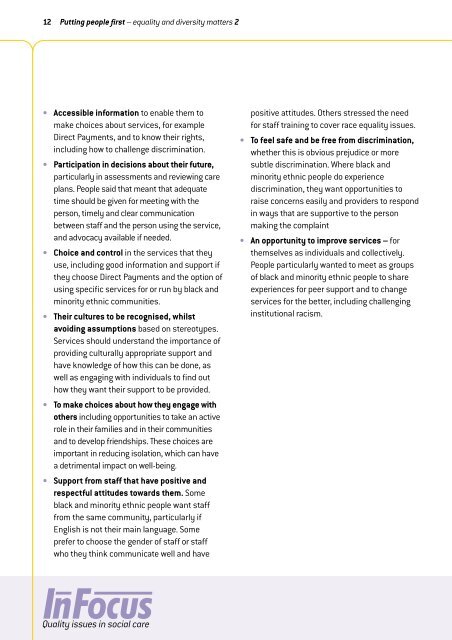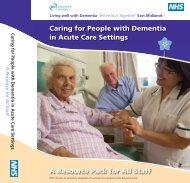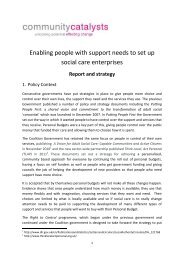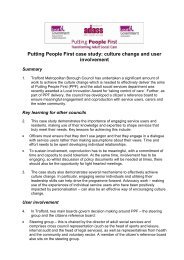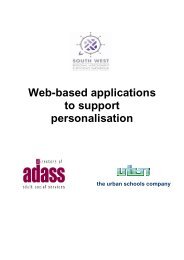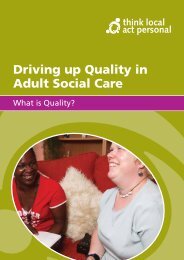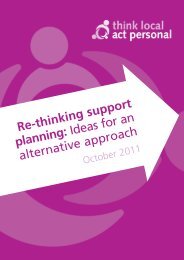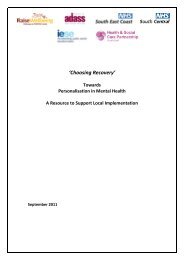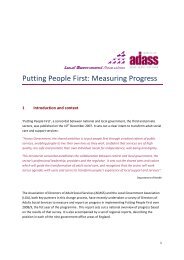Putting people first: Equality and Diversity Matters 2 - Think Local Act ...
Putting people first: Equality and Diversity Matters 2 - Think Local Act ...
Putting people first: Equality and Diversity Matters 2 - Think Local Act ...
Create successful ePaper yourself
Turn your PDF publications into a flip-book with our unique Google optimized e-Paper software.
12 <strong>Putting</strong> <strong>people</strong> <strong>first</strong> – equality <strong>and</strong> diversity matters 2Accessible information to enable them tomake choices about services, for exampleDirect Payments, <strong>and</strong> to know their rights,including how to challenge discrimination.Participation in decisions about their future,particularly in assessments <strong>and</strong> reviewing careplans. People said that meant that adequatetime should be given for meeting with theperson, timely <strong>and</strong> clear communicationbetween staff <strong>and</strong> the person using the service,<strong>and</strong> advocacy available if needed.Choice <strong>and</strong> control in the services that theyuse, including good information <strong>and</strong> support ifthey choose Direct Payments <strong>and</strong> the option ofusing specific services for or run by black <strong>and</strong>minority ethnic communities.Their cultures to be recognised, whilstavoiding assumptions based on stereotypes.Services should underst<strong>and</strong> the importance ofproviding culturally appropriate support <strong>and</strong>have knowledge of how this can be done, aswell as engaging with individuals to find outhow they want their support to be provided.To make choices about how they engage withothers including opportunities to take an activerole in their families <strong>and</strong> in their communities<strong>and</strong> to develop friendships. These choices areimportant in reducing isolation, which can havea detrimental impact on well-being.Support from staff that have positive <strong>and</strong>respectful attitudes towards them. Someblack <strong>and</strong> minority ethnic <strong>people</strong> want stafffrom the same community, particularly ifEnglish is not their main language. Someprefer to choose the gender of staff or staffwho they think communicate well <strong>and</strong> havepositive attitudes. Others stressed the needfor staff training to cover race equality issues.To feel safe <strong>and</strong> be free from discrimination,whether this is obvious prejudice or moresubtle discrimination. Where black <strong>and</strong>minority ethnic <strong>people</strong> do experiencediscrimination, they want opportunities toraise concerns easily <strong>and</strong> providers to respondin ways that are supportive to the personmaking the complaintAn opportunity to improve services – forthemselves as individuals <strong>and</strong> collectively.People particularly wanted to meet as groupsof black <strong>and</strong> minority ethnic <strong>people</strong> to shareexperiences for peer support <strong>and</strong> to changeservices for the better, including challenginginstitutional racism.


